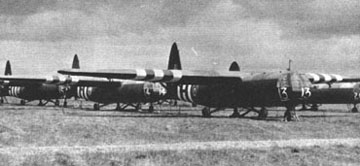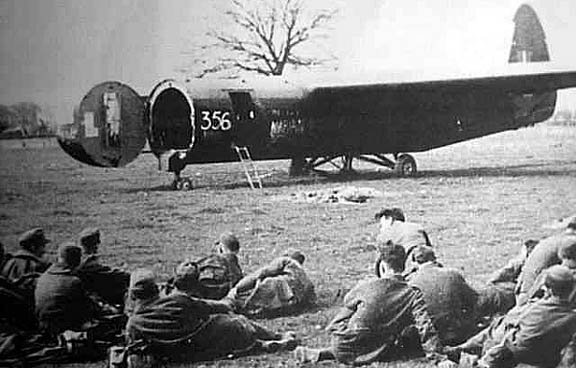BRITISH AVIATION RESOURCE CENTER > TRANSPORT/UTILITY > PREVIOUS PAGE

|
Type: Assault Glider Origin: Airspeed Models: AS.51 Horsa I and II First Flight: Prototype DG597: September 12, 1941 Service Delivery: DP279: May 1942 Number Produced: 3,644 Dimensions: Wing span: 88 ft. (26.84m) Length: 67 ft. (20.43m) Height: 19 ft. 6 in. (5.9m) Wing Surface Area: N/A |
Weights: Empty: 7,500 lb. (3402 kg) Loaded: 15,250 lb. (6917 kg) Performance: Towing Speed: 127 mph (204 km/h) Gliding Speed: 100 mph (161 km/h) Payload: 25 Troops or equivalent cargo. |
With the success of Germany's glider borne troops during the invasion of France and the low countries, the Allies began looking at making there own versions. The most successful British type was the Airspeed Horsa and was built in large numbers.
Equipped with a large cargo door on the port side, jettisonable tail and a nose that swung upwards, the Horsa proved to be very capable. The type was used extensively during most airborne operations involving British paratroops and was responsible for airlifting nearly a quarter of air-supplied supplies during the Normandy invasion.
The Horsa was extremely manuevewrable considering it was unpowered and rather large. Huge flaps powered by compressed air and wing mounted air brakes allowed the to stand on it's nose and swoop down quietly to a landing, although the troops carried probably didn't appreciate this much. A large numbers of the type were also used by the U.S. Army.


Gunston, Bill - The Encyclodepia of the Worlds Combat aircraft, 1976, Chartwell Books, Inc., NY
BRITISH AVIATION RESOURCE CENTER > TRANSPORT/UTILITY > PREVIOUS PAGE
